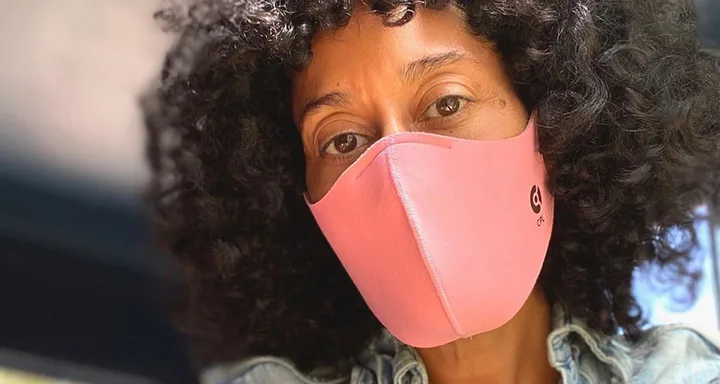Mandatory or not, many Australians are now wearing face masks in public places to help stop the spread of COVID-19.
And while any kind of face covering is better than none, the reusable mask method is proving popular. Whether it be to limit waste, support Indigenous organisations or to match an outfit (all valid), choosing a reusable mask made from sturdy yet breathable material has its perks.
But it still needs to be used properly in order for it to be effective, including washing. So if you’re going down the reusable mask route, here’s what you need to know.
How often does a reusable face mask need to be washed?
A reusable face mask needs to be washed after every use, otherwise it can become a carrier of germs rather than a protector. It’s for this reason it’s best to have at least two reusable masks for your own personal use, so you’re never caught without one if the other is in the wash.
Can I put my reusable face mask in the washing machine?
If the wash instructions of the material permits, reusable face masks can go in the washing machine. According to the Australian Government Department of Health, there’s no need to separate it from other items either. “It can be washed in the washing machine with other clothes,” the guidelines read, and should be at “the warmest appropriate water setting for the cloth.”
Given the close proximity of your mask to your face, you may also need to consider altering your usual washing detergent if you’re sensitive to fragrance.
Can I hand wash my reusable face mask?
Hand washing is also appropriate for reusable masks, using soap and the warmest water temperature permitted.
After handling used face masks (whether it be from hand-washing or putting them in a machine) you should wash your hands with soap and water or apply hand sanitiser.
Does it matter if my reusable face mask is still a bit damp?
Victoria’s Health and Human Services advises that “your cloth mask should be dry before re-using it.” It’s recommended to use the heat setting on your clothes dryer or to lay out flat to air dry in direct sunlight if possible.
Damp or wet material may make it harder to breathe, so allow ample dry time.










